Содержание книги Family Medicine: in 3 books. Book 3. Special Part. Multidisciplinary General Medical Practice: textbook / O.M. Hyrina, L.M. Pasiyeshvili, L.S. Babinets et al.
List of abbreviations
Chapter 1. Obstetrics
1.1. Anatomy and physiology of female body (V.H. Karpenko)
1.1.1. Anatomy of female reproductive system
1.1.2. Main female sex hormones
1.1.3. Diagnosis of early pregnancy
1.2. Check up and prenatal care of pregnant (O.O. Vorontsov)
1.3. Prenatal psychoprophylactic training of responsible paternity
1.4. Drug therapy in pregnancy
1.5. Early gestosis (V.H. Karpenko)
1.5.1. Rare forms of early gestosis
1.5.2. Treatment of early gestosis
1.6. Late gestosis (V.H. Karpenko)
1.7. Postpartum period (L.S. Babinets)
Chapter 2. Gynecology
2.1. Tumors of genital organs (V.H. Karpenko)
2.1.1. Tumors of external genitalia
2.1.2. Tumors of vagina
2.1.3. Tumors of the cervix
2.2. Dysfunctional (abnormal) uterine bleeding
2.3. Disorders of sex development in children and adolescents
2.3.1. Delayed puberty
2.4. Inflammatory genital diseases in girls and adolescent girls
2.5. Female genital inflammatory diseases
2.6. Perimenopause
2.7. Family planning (N.M. Pasiyeshvili)
2.7.1. Types of contraception
2.7.2. Family planning issues
2.7.3. Topical issues of infertile couple
Chapter 3. Allergology
3.1. Allergic rhinitis (N.M. Zhelezniakova)
3.2. Urticaria
3.3. Food allergy
3.4. Pollinosis (T.M. Pasiyeshvili)
3.4.1. Pollinosis in children
3.5. Pharmacotherapy of allergic diseases (N.M. Zhelezniakova)
Chapter 4. Systemic allergic vasculitis (V.M. Zhdan, M.Yu. Babanina)
Chapter 5. Dermatology (S.A. Bondar)
5.1. Pyodermatites
5.1.1. Features of clinical forms
5.1.2. Treatment and prevention of pyodermia
5.2. Mycoses
5.2.1. Keratomycosis
5.2.2. Pseudomycosis
5.2.3. Dermatophytosis
5.2.4. Candidosis
5.3. Parasitic skin diseases (dermatozoonoses)
5.3.1. Pediculosis
5.3.2. Scabies
5.4. Viral dermatoses
5.4.1. Catarrhal fever (Herpes simplex)
5.4.2. Shingles (Herpes zoster)
5.4.3. Warts (verrucae)
5.5. Allergic skin diseases
5.5.1. Dermatites
5.5.2. Eczema
5.5.3. Atopic dermatitis
5.5.4. Psoriasis
5.6. Sexually transmitted infections (A.A. Nalizhytyi)
5.6.1. Syphilis
Chapter 6. Neurology (O.L. Tovazhnianska)
6.1. Headache
6.1.1. Primary headache
6.1.2. Secondary headache
6.1.3. Headache diagnosis and patient’s route
6.1.4. Headache treatment
6.2. Acute disorder of cerebral circulation
6.3. Encephalopathic syndrome
6.4. Paroxysmal neurological conditions
6.4.1. Epileptic seizure
6.4.2. Paroxysmal states of nonepileptic origin
6.5. Syndromes of the peripheral nervous system disorders
6.6. Neurological syndromes caused by somatic pathology
Chapter 7. Basics of geriatrics and gerontopharmacology (A.A. Zazdravnov)
Chapter 8. Otorhinolaryngology (S.M. Pukhlyk)
8.1. Ear pain
8.1.1. Diseases accompanied by otalgia
8.1.2. Inflammatory diseases of the outer and middle ear
8.1.3. Neoplasms of the external auditory canal and middle ear
8.2. Pain in the pharynx
8.2.1. Diseases accompanied by sore throat
8.2.2. Inflammatory diseases of the pharynx
8.2.3. Malignant pharyngeal tumors
8.2.4. Malignant neoplasms of the larynx
8.3. Disorders of nasal breathing
8.3.1. Inflammatory diseases of the nose
8.3.2. Inflammatory diseases of the sinuses (sinusitis)
8.3.3. Foreign bodies in the nasal cavity
8.3.4. Nasal and nasopharyngeal neoplasms
8.3.5. Nasal septal injuries
8.3.6. Adenoid hypertrophy
8.3.7. Nasal injuries
8.3.8. Difficulty laryngeal breathing
8.4. Nasal bleeding
8.5. Hearing loss
8.5.1. Diseases accompanied by hearing loss
8.6. Purulent discharge from the ear
8.6.1. Diseases associated with purulent discharge from the ear
8.6.2. Malignant tumors of nasal cavity and sinuses
8.7. Voice disorders
8.8. Rhinolalia
Chapter 9. Ophthalmology (P.A. Bezditko)
9.1. Refractive errors in children and adults
9.2. Diseases of conjunctiva
9.2.1. Inflammatory conjunctival diseases of exogenous etiology
9.2.2. Allergic conjunctivitis
9.2.3. Degenerative dystrophic conjunctival changes
9.2.4. Tumors of conjunctiva
9.3. Eyelid diseases
9.3.1. Congenital anomalies of the eyelids
9.3.2. Acquired diseases of the eyelids
9.3.3. Tumors of the eyelids
9.4. Diseases of the lacrimal organs
9.4.1. Congenital diseases of the lacrimal organs
9.4.2. Neoplasms of the lacrimal passages
9.5. Corneal diseases
9.5.1. Subjective and objective symptoms
9.5.2. Characteristic clinical forms
9.6. Uveal diseases
9.6.1. Choroidal inflammatory diseases
9.6.2. Choroidal neoplasms
9.7. Lens diseases
9.7.1. Congenital cataract
9.7.2. Acquired lens opacity
9.7.3. Lens dislocation
9.7.4. Presentday methods of lens diseases treatment
9.8. Glaucoma
9.8.1. Primary glaucoma
9.8.2. Secondary glaucoma
9.8.3. Congenital glaucoma
9.9. Retinal diseases
9.9.1. Retinal vascular disease
9.9.2. Acute circulatory disorders of the retinal vessels
9.9.3. Diabetic retinopathy
9.9.4. Retinal and chorioretinal degeneration
9.9.5. Hereditary retinal degeneration
9.9.6. Retinal inflammatory diseases
9.9.7. Retinal detachment
9.9.8. Tumors of the retina
9.9.9. Retinal damage in patients with AIDS
9.10. Optic nerve diseases
9.10.1. Inflammatory diseases of the optic nerve
9.10.2. Toxic (dystrophic) lesions of the optic nerve
9.10.3. Vascular diseases of the visual analyzer
9.10.4. Choked disc
9.10.5. Atrophy of the optic nerve
9.10.6. Optic nerve tumors
9.10.7. Developmental abnormalities of the optic nerve
9.11. Orbit diseases
9.12. Visual organ injuries
9.12.1. Mechanical injuries
9.12.2. Eye burns
9.12.3. Ultraviolet damage to the eyes
Chapter 10. Pediatrics
10.1. Anatomy and physiology of newborn and neonatal care (Ya. I. Venher)
10.1.1. Anatomy and physiology of child in the neonatal period
10.1.2. Physiological (transient) states in the neonatal period
10.1.3. Newborn sleep
10.1.4. Primary examination of child after discharge from the maternity unit
10.1.5. Newborn care
10.1.6. Hygiene rules to follow with children of the first year of life
10.2. Breastfeeding a newborn (V.I. Velychko)
10.2.1. Qualitative and quantitative composition of breast milk
10.2.2. Regimen and diet of nursing woman
10.3. Feeding children of the first year of life (H.O. Danylchuk, N.S. Shnayder)
10.3.1. Feeding on demand
10.3.2. Introduction of complementary foods in breastfeeding period
10.3.3. Premature baby feeding
10.3.4. Formula feeding
10.3.5. Mixed feeding
10.4. Nutrition for children aged 1—3 years (V.I. Velychko)
10.5. Preventive vaccination (T.V. Frolova)
10.5.1. Basics of vaccination
10.5.2. Classification of vaccines
10.5.3. Presentday vaccine components
10.5.4. Vaccines provided by family physician. Modern vaccination schedule
10.5.5. Key issues while providing vaccination
Chapter 11. Psychiatry (V.I. Korostiy)
11.1. Anxiety disorders
11.1.1. Phobic anxiety disorders
11.1.2. Other anxiety disorders
11.1.3. Obsessivecompulsive disorder
11.1.4. Treatment program for anxiety disorders
11.2. Depression
Chapter 12. Phthisiology (O.S. Shevchenko)
12.1. Strategies for TB control
12.2. TB prevention
12.2.1. Vaccination
12.2.2. Chemoprophylaxis
12.2.3. Infection control
12.3. Tuberculosis detection
12.3.1. Active detection
12.3.2. Passive detection
12.3.3. Diagnosis of tuberculosis at different levels of medical care
12.3.4. Formulation of diagnosis
12.4. TB treatment
Chapter 13. Surgery
13.1. Pediatric surgery (V.S. Konoplitskyi)
13.1.1. Traumatic disease
13.1.2. Inflammatory and purulentseptic diseases in children
13.1.3. Acute and chronic digestive tract diseases
13.2. General surgery (L.S. Babinets, B.O. Mihenko)
13.2.1. Wounds and wound infection
13.2.2. Breast diseases
13.2.3. Diseases of the thoracic and abdominal cavities
13.2.4. Emergency surgical diseases of the abdominal cavity
13.2.5. Purulent outpatient surgery
13.2.6. Benign tumors
13.3. Diseases of the great vessels (L.S. Babinets, B.O. Mihenko)
13.3.1. Lower limb varicose vein disease
13.3.2. Acute superficial vein thrombophlebitis of the lower limbs
13.3.3. Acute deep vein thrombosis of the lower limbs
13.3.4. Occlusive diseases of the lower limb great arteries
13.3.5. Postthrombophlebic lower limb syndrome
13.3.6. Thrombosis and embolism of the upper and lower peripheral arteries (acute arterial insufficiency)
13.3.7. Acute embolism and thrombosis of mesenteric vessels (acute mesenteric ischemia)
13.4. Proctology (T.I. Tamm)
13.4.1. Acute and chronic proctological diseases
13.4.2. Diarrhealinflammatory syndrome
13.4.3. Rectal prolapse syndrome
13.5. Thermal and chemical damage (B.O. Mihenko, L.S. Babinets)
13.5.1. Thermal burns
13.5.2. Chemical burns
13.5.3. Electrical injury
13.5.4. Cold injury
13.6. Traumatology and orthopedics (B.O. Mihenko, L.S. Babinets)
13.6.1. Acute damage to bones and joints
13.6.2. Congenital and chronic lesions of bones and joints
13.7. Urology (V.M. Lisovyi, I.A. Harahatyi)
13.7.1. Dysuric disorders, urinary incontinence
13.7.2. Infectious and inflammatory diseases of the genitourinary system
13.7.3. Prostate gland enlargement
13.7.4. Emergency care in urological diseases
Annexes
Авторы книги Family Medicine: in 3 books. Book 3. Special Part. Multidisciplinary General Medical Practice: textbook / O.M. Hyrina, L.M. Pasiyeshvili, L.S. Babinets et al.
L.S. Babinets, P.A. Bezditko, S.A. Bondar, V.I. Velychko, Ya.I. Venher, O.O. Vorontsov, I.A. Harahatyi, N.M. Zhelezniakova, A.A. Zazdravnov, V.H. Karpenko, V.S. Konoplitskyi, V.I. Korostii, V.M. Lisovyi, B.O. Mihenko, A.A. Nalizhytyi, N.M. Pasiyeshvili, T.M. Pasiyeshvili, S.M. Pukhlyk, T.I. Tamm, O.L. Tovazhnianska, T.V. Frolova, O.S. Shevchenko, V.M. Zhdan, M.Yu. Babanina, N.S. Shnayder, H.O. Danylchuk

 01054, г. Киев, ул.
01054, г. Киев, ул.




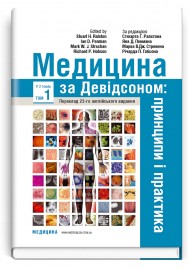



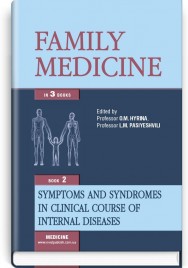


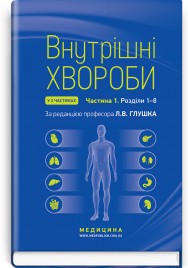

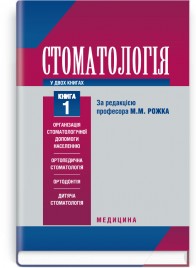

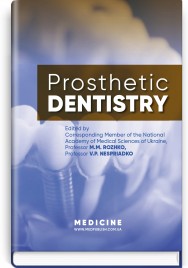



 Архив содержит книги, которых нет в наличии, но которые в ближайшее время, возможно,
Архив содержит книги, которых нет в наличии, но которые в ближайшее время, возможно,